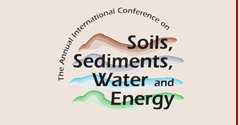Article Title
Abstract
The function of permeable barriers is to 1. allow the groundwater to flow freely through them, and 2. to entrap or destroy chemical contaminants such as metals and organic hydrocarbons. Certain organically modified clays have the ability to act as anion and cation adsorbents, allowing them to remove heavy metals such as Pb and Zn. A Polar Organoclay removes anions such as hexavalent chrome, arsenate, phosphates, sulfates and nitrates from water. It can also remove humic acids, perchlorate and other negatively charged organic compounds. A neutral type of Organolcay removes creosote, PNAH’s, PCB, dioxene, BTEX and other non-polar organic hydrocarbons of low solubility very effectively. For good measure, powdered activated carbon can also be included in the barrier mix. Such a design allows for a barrier that retards the movement of organic compounds and metals into the surrounding environment, be that a river or a lake. This article presents new data on the organoclays capacity for contaminant removal which where obtained in column studies in the laboratory of the University of Virginia.
Recommended Citation
Alther, George R.
(2010)
"The Value Of Organoclays In Permeable Barriers,"
Proceedings of the Annual International Conference on Soils, Sediments, Water and Energy: Vol. 11, Article 15.
Available at:
https://scholarworks.umass.edu/soilsproceedings/vol11/iss1/15
